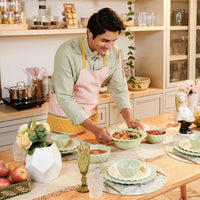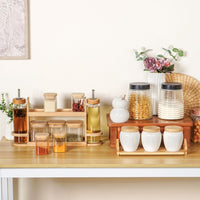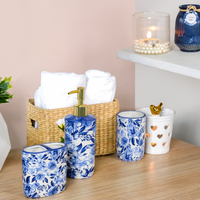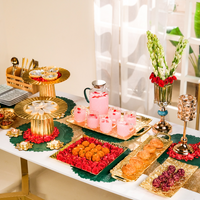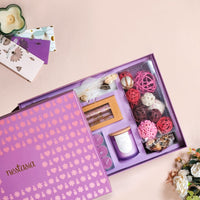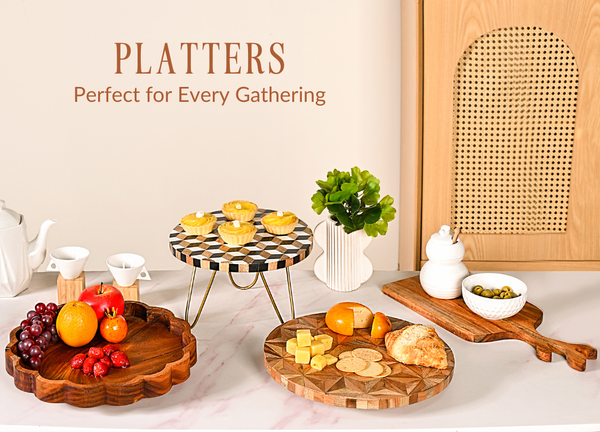Hosting and organising a potluck party can be a delightful way to bring people together over shared meals and good company. Our complete checklist ensures a seamless and enjoyable experience, covering everything from planning the guest list to coordinating dishes and setting up the venue. Thoughtfully created for first-timers, this guide offers practical tips and creative ideas to make your potluck memorable and stress-free. Dive in and get ready to host the perfect potluck!
What Is A Potluck And Why It's A Popular Choice For Gatherings
A potluck is a communal gathering where guests each bring a homemade dish to share. This tradition fosters a sense of community and diversity, as everyone contributes to the meal, resulting in a wide variety of dishes. Potlucks are popular because they distribute the workload, making hosting easier and more affordable. They also encourage culinary creativity and provide an opportunity for social interaction, making them a beloved choice for gatherings of all sizes.
Visit: https://nestasia.in/collections/dining
Why Host A Potluck?
Hosting a potluck party is a fantastic way to foster community spirit while minimising the host's workload and expenses. It allows guests to showcase their culinary skills, share cultural dishes, and enjoy a diverse array of homemade meals.
Potlucks promote inclusivity by accommodating various dietary needs and preferences, making them ideal for gatherings of friends, colleagues, or neighbours. Additionally, they encourage social interaction and create a relaxed, communal atmosphere where everyone contributes to the shared experience of good food and company.
A Step-By-Step Checklist For Organising A Potluck
1. Decide The Date And Location
Choosing the right date and venue is crucial. Consider factors like the availability of your guests, especially if they have conflicting schedules. The venue should be spacious enough to accommodate all attendees comfortably, with sufficient seating and perhaps access to kitchen facilities for last-minute preparations or keeping dishes warm.
2. Pick A Theme
Themes inject excitement and creativity into the potluck. They can range from cultural themes (like Italian, Mexican, or Asian cuisine) to seasonal themes (such as summer BBQ or winter comfort foods). A theme helps guide guests in their dish selections, ensuring a cohesive and interesting menu where dishes complement each other.
Also visit: https://nestasia.in/collections/bakeware

3. Creating Invitations
Craft detailed invitations that not only specify the date, time, and location but also clearly outline the potluck theme and what each guest should bring. For example, if the theme is "International Delights," you might ask guests to bring dishes from different countries or regions. Providing this information upfront helps prevent duplicate dishes and ensures a well-rounded menu.
Also visit: https://nestasia.in/collections/dinner-set
4. Planning The Menu
Collaborate with guests to create a diverse menu that includes appetisers, main courses, sides, and desserts. Encourage participants to share their dish ideas beforehand to avoid overlaps and to ensure a good variety. Consider dietary restrictions and preferences to accommodate everyone's needs, ensuring there are options for vegetarians, vegans, gluten-free, and other dietary requirements.
5. Preparing The Venue
Prepare the venue by arranging seating in a way that encourages interaction and mingling. Decorate according to the theme to create a festive atmosphere. Set up serving tables with utensils, plates, napkins, and condiments conveniently located. Ensure there are waste bins and recycling options available to manage cleanup efficiently.
6. Setting Up Serving Stations
Organise serving stations logically, separating hot and cold dishes to maintain optimal temperatures. Label each dish with its name and list any potential allergens (e.g., nuts, dairy) to inform guests of dietary restrictions. Provide serving utensils and consider signage or menu cards to help guests navigate the offerings easily.
Also visit: https://nestasia.in/collections/table-linen
7. Be Aware Of Dietary Restrictions
Collect dietary information from guests in advance to accommodate allergies, intolerances, or dietary preferences. Communicate with guests about the ingredients used in dishes to ensure transparency and safety. Offer alternative options or adaptations where possible to ensure everyone can enjoy the potluck without concerns.
Also visit: https://nestasia.in/collections/glassware
8. Label & Return Dishes
Provide labels and markers for guests to clearly identify their dishes. After the event, facilitate the smooth return of dishes to their owners by ensuring labels remain intact and dishes are handled carefully. This helps prevent mix-ups and ensures all items are returned promptly and in good condition.
9. Package Leftover Food
Have containers ready for guests to take home any leftover food they wish to enjoy later. Consider providing guidelines on safe food storage and reheating to maintain quality. Alternatively, arrange for donation of excess food to local charities or shelters, ensuring it is handled and transported safely to benefit those in need.
Also visit: https://nestasia.in/collections/jars-canisters
10. Thank Your Guests
Express gratitude to guests for their contributions and attendance. Consider sending personalised thank-you notes or emails to acknowledge their effort in making the potluck party a success. A small token of appreciation, such as a homemade treat or a small gift, can also convey your appreciation and encourage continued participation in future gatherings.

Conclusion
To wrap it all up, hosting a potluck party is more than just a meal-sharing event; it's a celebration of community and culinary creativity. By following our comprehensive checklist - from selecting a theme and planning the menu to setting up the venue and thanking participants - you can create an engaging and harmonious gathering where everyone can contribute and enjoy delicious dishes together.
FAQs On Organising Potluck
1. What should the host provide for a potluck?
The host of a potluck typically provides the venue with seating, tables, and basic amenities like plates, utensils, napkins, and serving dishes. They may also organise beverages, condiments, and perhaps a few staple dishes to ensure a balanced meal. Additionally, the host ensures clear communication about the event details and coordinates the overall logistics.
2. How do you organise food for a potluck?
Organising food for a potluck involves several key steps - setting a theme or guidelines for dishes, coordinating with guests to avoid duplicates, considering dietary preferences, and planning a balanced menu of appetisers, mains, sides, and desserts. Providing clear instructions and labels helps ensure variety and a cohesive dining experience.
3. How to make a list for a potluck?
Creating a list for a potluck begins by determining the number of guests and their dietary preferences. Choose a theme or type of dishes, appetisers, mains, and desserts, then assign specific dishes or categories to guests to ensure variety. Include necessary items like drinks, utensils, and serving dishes to facilitate a well-rounded and organised event.
4. How do you conduct a potluck?
Conducting a potluck involves planning and coordination. Set a date and venue, and communicate clearly with guests about what to bring based on a theme or dish category. Provide necessary amenities like serving dishes, utensils, and labels. During the event, organise serving stations, manage dietary considerations, and facilitate a friendly, inclusive atmosphere.
5. What are the rules for bringing something to a potluck?
When bringing something to a potluck, follow these guidelines - coordinate with the host to avoid duplicating dishes, adhere to any theme or dish category specified, prepare enough food to serve several people, and consider the dietary restrictions of other guests. Ensure dishes are properly labelled with ingredients to accommodate allergies or preferences.

